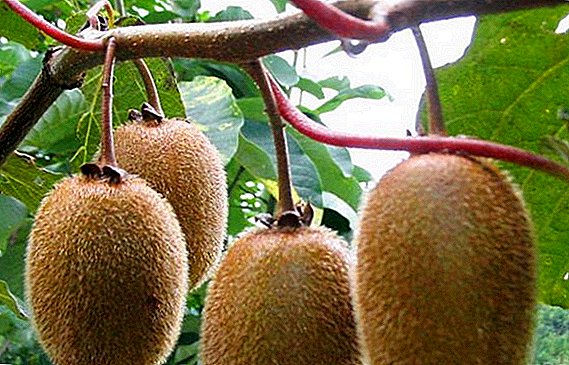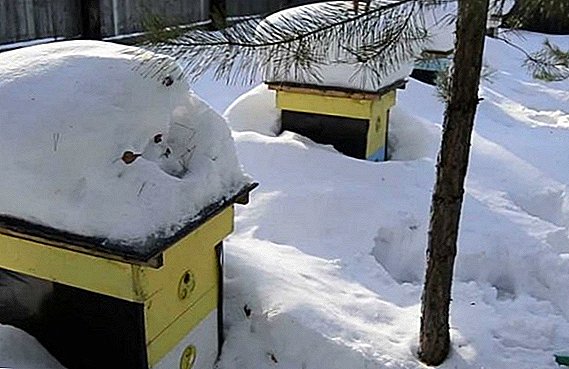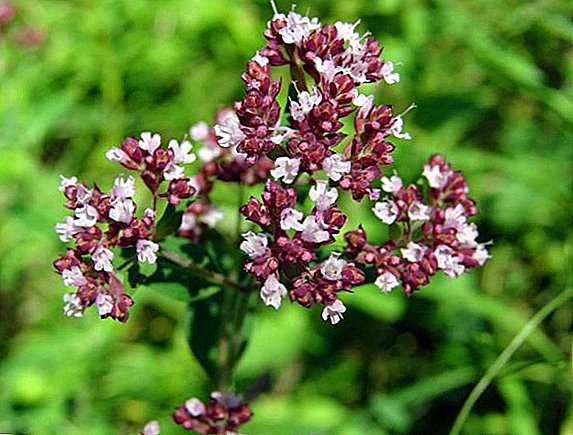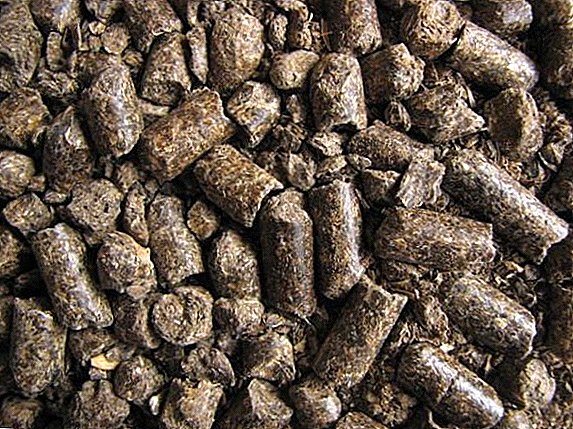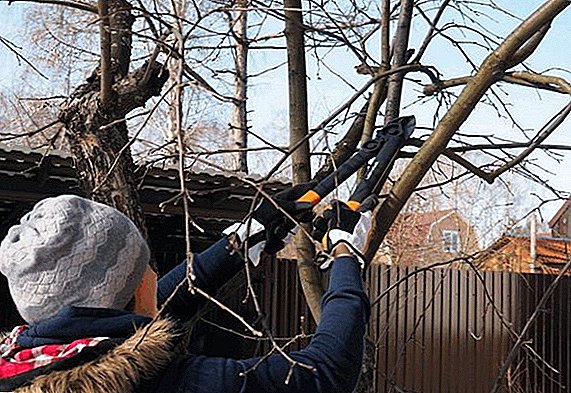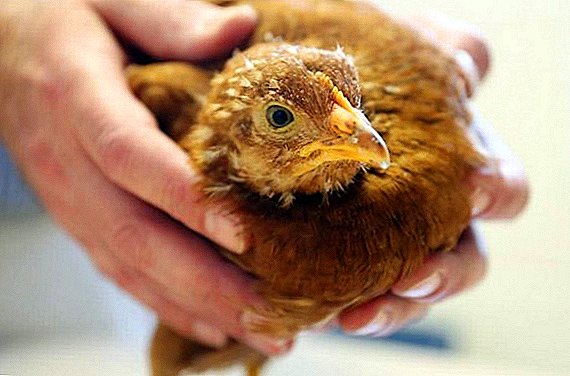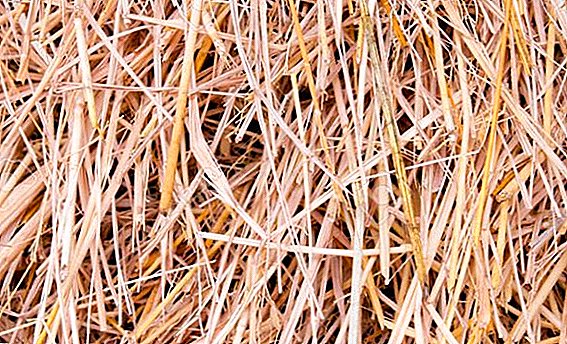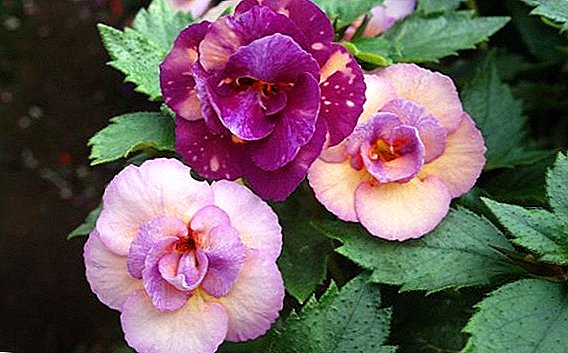 Ahimenez - indoor perennial plant with a wintering rhizome and dying in the winter of the upper part. For beautiful flowers in the form of gramophone phonics, Ahimenez is called "magic flowers" or "miracle flashlights." The article describes how to care for this indoor flower, as well as get acquainted with its characteristics.
Ahimenez - indoor perennial plant with a wintering rhizome and dying in the winter of the upper part. For beautiful flowers in the form of gramophone phonics, Ahimenez is called "magic flowers" or "miracle flashlights." The article describes how to care for this indoor flower, as well as get acquainted with its characteristics.
Features Ahimenezov
The leaves of this plant are wrinkled, whole, serrated along the edges, in some varieties pubescent, dark green above, reddish below. Flowers appear in the axils of the leaves on long or short pedicels, depending on the variety, long tubular, with a rounded five-lobed corolla. The colors of colors are white, red, blue, yellow and all their intermediate shades (pink, blue), there are two-colored varieties.
Did you know? In Greek, Ahimenez means “the one who is afraid of the cold,” since he stops his growth with the arrival of cold and hibernates for about six months, from October to March.
The root system of the flower is small and located close to the ground surface. Rhizomes have oblong scaly nodule-rhizomes, which look like small bumps. Ahimenez blooms from spring to autumn (from May to October).

Plant differences
The main difference of achimenes is in the form of a plant: it can be either upright (bush) or ampelous, that is, cascade. Ahimenes are also distinguished by the shape and size of the flower: simple and double, large and small. Plant height ranges from 20 to 60 cm, depending on the species.
Read more about the description of the popular varieties of achimenes.
The best varieties of plants with a description
There are so many varieties of this plant. Below we consider the most popular ones:
- Humberto vitorino - large-flowered variety with light lilac flowers (flower diameter up to 8 cm) and a yellow heart. Form upright, forms a lush bush.
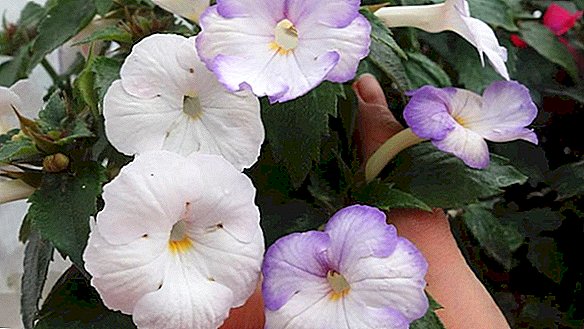
- Abendrot - ampelous form with large-flowered double flowers of yellow color. Blooms profusely.
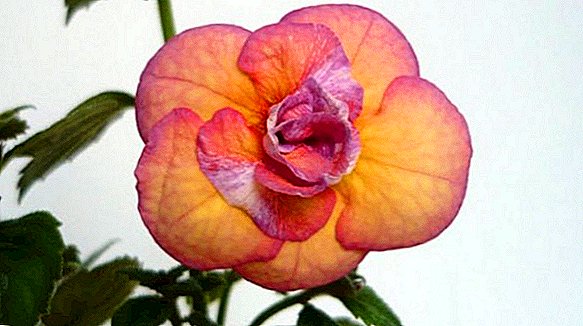
- White glory - upright shape with large white flowers and yellow core.
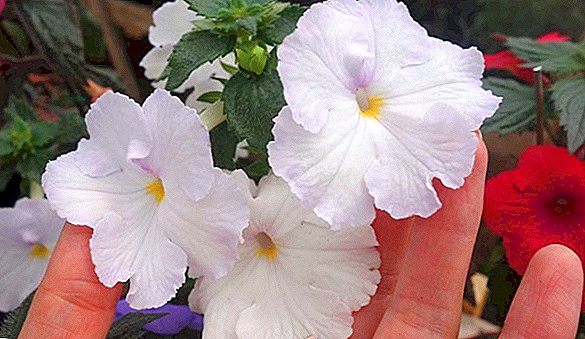
- Achimenez mexican - ampelous form, leaves and shoots pubescent. Flowers red-purple with a white heart and a wide bend of petals.
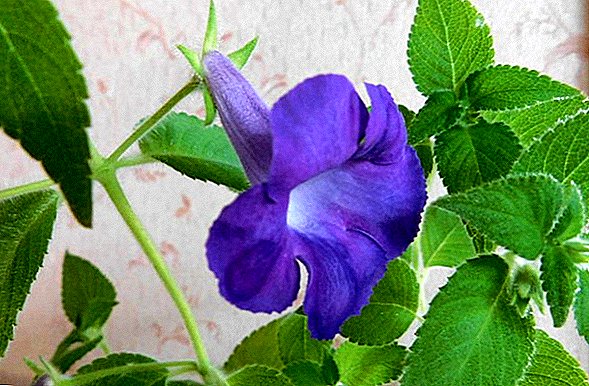
- Blue bird - upright shape with blue-violet flowers. Petals toothed and wavy.
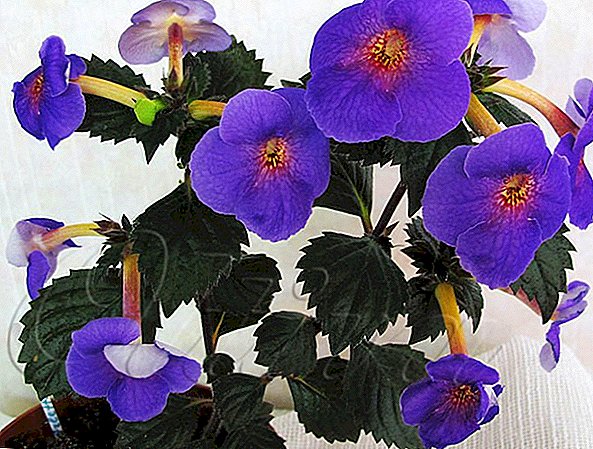
- Amile saliba - upright, large-flowered form. The flowers are simple, yellow, with an orange border.

- Ambroise verschaffelt - Ampel form. The flowers are white with a pink-purple mesh, the heart is yellow.
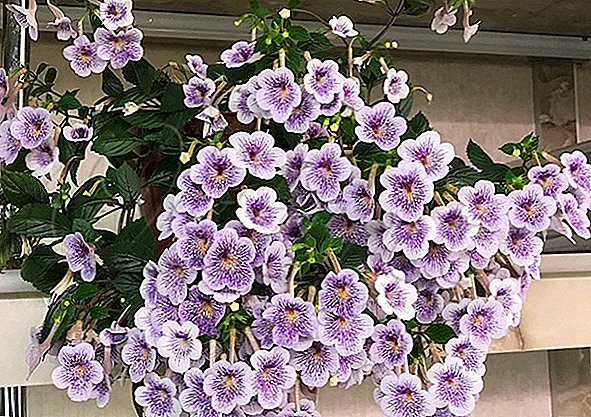
- Desiree - upright shape with large dark pink colored terry flowers. The dark green leaves below have a red tint.
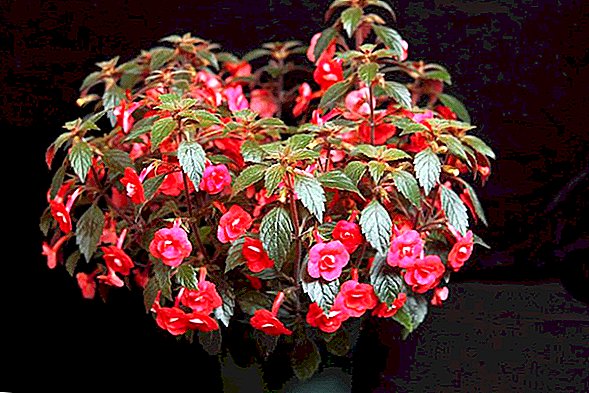
Conditions for growing at home
In order to successfully grow this flower at home, you should take into account a number of plant requirements: for location, lighting, temperature, and air humidity.
Location and lighting
In the house or apartment, Ahimenes is grown on the western and eastern windows, because it does not tolerate the direct rays of the sun. You can grow on the windowsills, which go to the south, but the flower must pritenyat. On the north windows the flower will lack light, which will affect its flowering.
Did you know? The forefather of modern achimenes, erect, achimenes, was discovered in 1756 when Irish botanists studied Jamaica.
Air temperature and humidity
The temperature in the range of + 20 ... + 30 ° С allows flower growers to grow ampelous forms of achimenes on balconies and cottages. When the temperature drops to + 15 ° C, the flower goes into a dormant period (stops growing, drops leaves, dries out), which lasts from autumn to spring. The above-ground part of the flower dies off, it is cut off, and rhizomes (rhizomes) with a scaly surface remain in the pots, which remain in the same ground until spring in a dark place at a temperature of + 10 ... + 12 ° С.
These flowers like high humidity of air, but it is impossible to spray them with water - spots are formed on leaves, the decorative effect of a flower is lost. Water should not be sprayed onto the flower, but near it or next to put a small container with water.
Video: Growing and caring for achimenez at home
Home care
When growing achimenes at home, you need to take into account the characteristics of watering, feeding, pruning and transplanting this plant.
Watering rules
Watering Ahimenes need moderately, water at room temperature, while you must follow when the earth lump dries. During the rest period, the flower is watered once a month so that the rhizome does not dry out. It is necessary to avoid water on the leaves, so watering is carried out at the root, and preferably in the pan.
Important! The excess water from the pallet must be drained, otherwise the roots of achimenes will rot.
Top dressing
At rest, the ahiménez does not need feeding. When it grows and blooms, it is fertilized with special complex fertilizers for flowering houseplants in small doses with each watering, which allows you to get a richly flowering shrub (for example, Fertika Lux). If the house has an aquarium, then you can take water for irrigation from it. Such water is good for the plant because it has already settled, filtered and enriched with organic elements.
Pruning
For more lush flowering bush use pinching, or pruning. Pinching - remove the top of the plant to the next pair of leaves. Pinching is performed until buds appear. Do it with small scissors or gently with your fingers. If at the early stages of the growing season pinching is not done, then you can trim the achiemenes, but only if the plant does not bloom yet.
Transfer
Plants transplant (transshipment) until mid-August. Towards autumn, the flower prepares for a period of rest, and its vital functions slow down. If the flower needs a larger volume of land, it is rolled over into a larger pot.
Video: Ahimenez Transplant Transfer Method
1-2 hours before transplantation, the flower is watered abundantly, then carefully removed from the pot and transplanted into a new one, adding the prepared soil and making a drain in advance. The soil should be on the basis of peat, light, loose, with the addition of sand. You can take two parts of turf and leaf land, mix and add one part of the sand. The transplanted plant needs to be watered.
Breeding
The reproduction of this plant is carried out by seeds, division of rhizomes (rhizomes), leaves and cuttings. Consider each of the methods separately.
We advise you to learn all the secrets of growing ahmenes at home.
Seeds
Seeds are bought in a specialty store and sown in the ground (a mixture of leafy earth and sand), not sprinkling earth on top. Watering is done only by spraying, adhering to an ambient temperature of + 22 ... + 25 ° C. Sowing covered with glass or film, occasionally removing and airing the landing. After a couple of weeks, shoots appear, which after the appearance of 2 leaves are planted (dive). When a flower is propagated by seeds, the varietal traits of the parent plant are not transmitted to the young plant.
Rhizomes
The most common method of reproduction of achimenes is rhizomes (by dividing overgrown rhizomes). Planting of this flower is done in spring (April, May). Drainage is required (you can take expanded clay) - flowers do not tolerate excess water. Divided rhizomes (rhizomes) after treatment with potassium permanganate are laid out horizontally in a pot and sprinkled with soil 1-3 cm (depends on the size of the riza). After planting, put the pot on a bright place, watered moderately. After sprouting, the plant is transferred to the west or east side of the house.
Video: All methods of breeding achimenes
Cuttings
For propagation of achimenes, plant cuttings are also used. For this, the upper sprout is cut, the lower two leaves are removed (there will be rhizomes formed in axillary points). Properly chosen cutting should have 2-3 pairs of leaves. The cuttings are rooted in water or sand, then planted in the ground or peat tablet. Put on the windowsill with diffused light. After 2-3 months, the stalk forms one or two rhizomes, which next year will give rise to a new flower.
Sheets
Reproduction in sheets - the process is a bit complicated and ineffective, but still sometimes gives a good result. Take a side healthy sheet of achimenes and root it in the sand or deciduous-sod mixture of soil, best of all in sphagnum moss. To root the leaf, it is necessary to create a small greenhouse, covering the leaf with a transparent jar or glass. During reproduction by separate leaves, the growth process is inhibited, the rhizomes grow small, therefore preference is given to reproduction by rhizomes, which allows to obtain a flowering plant already in the year of planting.

Diseases and pests
These flowers are resistant to many diseases, but if you violate the rules of care, the plant can get sick.
The main diseases and pests of Ahimenes:
- Ring spots - light, with the transition to brown, spots on the leaves. Appear from an oversupply of the sun, when watering with cold water, drafts.
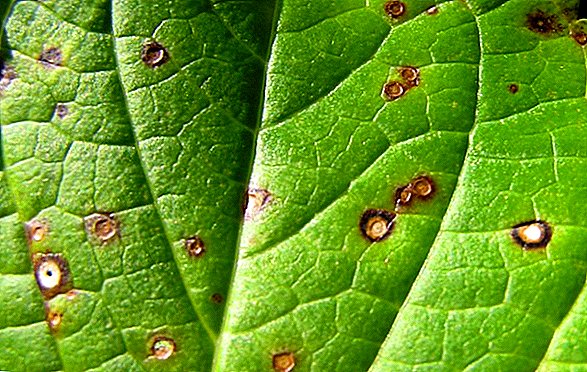
- When watering with hard water occurs chlorosis - yellow leaves.

- Gray rot - A fungal disease in which the leaves turn yellow and die. The disease develops at a low temperature and an excess of moisture, with a sharp temperature drop, plant thickening. To combat fungal diseases, fungicides are used: "Oxyhom", "Abiga-Peak", "Fundazol", etc.
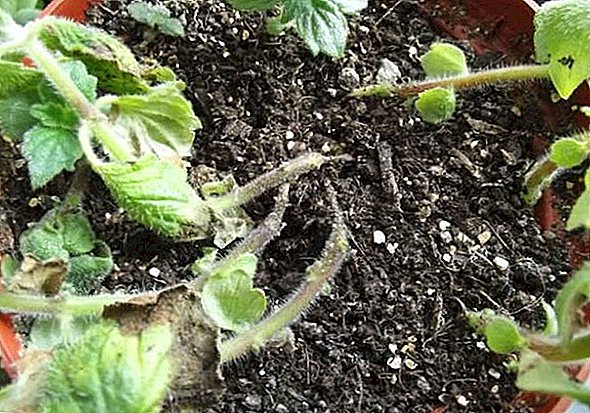
- Red spider mite - A tiny red spider settling on the underside of a leaf. Leaves infected with mite turn white, then turn yellow and dry. Promote the reproduction of red spider mites, increased air dryness and temperature. Treated infected plants by spraying 2-3 times with a week break with acaricides "Akarin", "Fitoverm", "Neoron", etc.
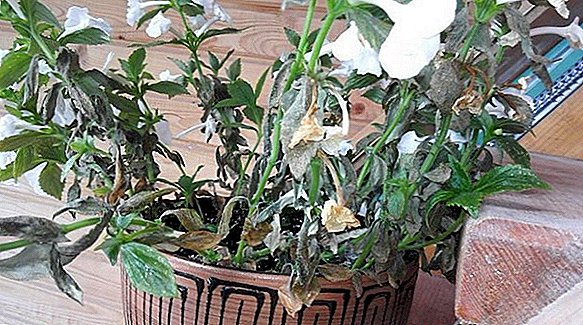
- Thrips - very small, dark brown color, insects living on the lower surface of the leaf. To combat them use insecticides "Confidor", "Mospilan" and others.
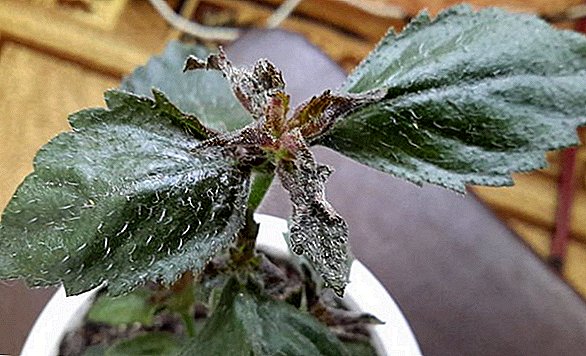
- Aphid - small bugs of green, brown or black color (depending on the species). Breed very quickly because they live in colonies. If you do not take time to protect the plant, the plant will cover the whole flower. From it young leaves are twisted, and also tops of escapes are bent. To fight with aphids use the insecticide "Aktara".
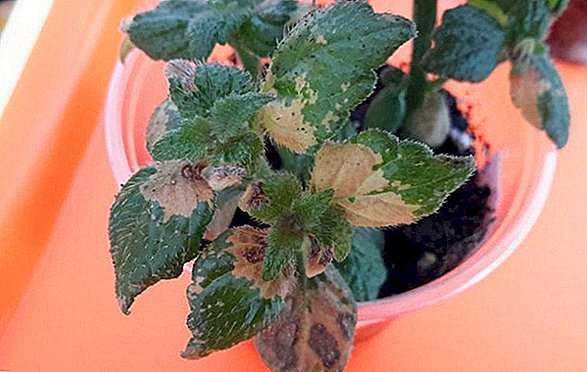
Important! Plant treatment with fungicides, acaricides, insecticides and other chemicals should be carried out only in well ventilated areas, preferably in those where people do not live.
Caring for achimenes is not a difficult process, as this plant is unpretentious and does not need a special approach. Adhering to the basic rules of care for this flower, you will surely wait for its long and abundant flowering.
















